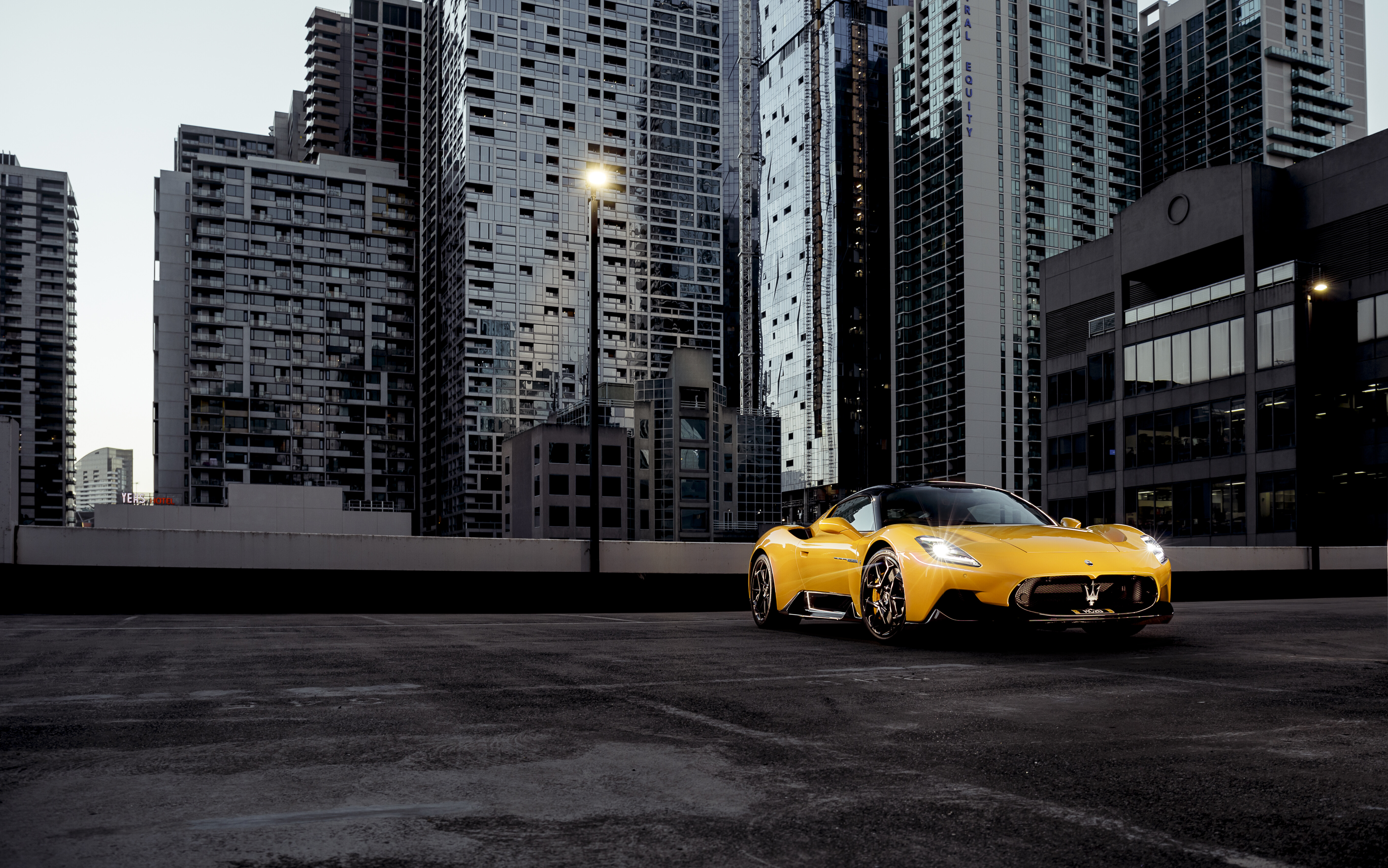Maserati is a company without any great track record in building mid-engined sports cars. No, really. Prior to the arrival of the MC20, there were easily more mid-engined Renault 5s built than mid-engined Maseratis. Of more than 100 models the storied Italian manufacturer has built, only three featured the engine behind the driver.
Production of the Bora, built between 1971 and 1978, totalled a mere 564 units. The biggest contribution came from its junior sibling, the Merak, which saw 1830 cars roll from the plant at Viale Ciro Menotti in Modena between 1972 and 1983. Fifty customer MC12s were built between 2004 and 2005, with another 12 constructed as pure race cars. A total of 2444 cars doesn’t seem much of a legacy to hang a halo from.
And yet here we are, standing on the roof of a car park in Melbourne, with Maserati’s mid-engined flagship, the MC20, wondering quite what to make of it all. In many ways, the MC20 is a bold move. It sports a V6 beneath its rear deck in a market that, for the time being at least, still offers a number of very accomplished rivals with eight, 10 and 12-cylinder engines.

Then there’s the fact that this undeniably niche model is being launched at a time when the one thing Maserati desperately needs is volume. At Maserati’s centenary celebration in 2014, then-Fiat Chrysler CEO Sergio Marchionne took to the stage in trademark knitwear and made a bold prediction. “In 2018, annual sales for Maserati will be 75,000 units or about five times what they are today,” he told a black-tie gathering of Maserati owners at the Reggia di Venario Reala. “Maserati will not be the biggest luxury brand, but the best.” For a while it looked as if his claim was about to come true.
Buoyed by sales of the Levante SUV, Maserati shipped 51,000 cars in 2017. Since then, it has slumped dramatically, with 20,000 units delivered in 2020. Of course, there are some macroeconomic factors beyond Maserati’s control to factor into the equation, but the company today is undeniably a long way from where it expected to be back in the heady days of 2014.
Speaking at an investor conference in 2018, Marchionne’s successor, Mike Manley, noted, “With hindsight, when we put Maserati and Alfa together, it did two things. Firstly, it reduced the focus on Maserati the brand. Secondly, Maserati was treated for a period of time almost as if it were a mass-market brand, which it isn’t and shouldn’t be treated that way.”
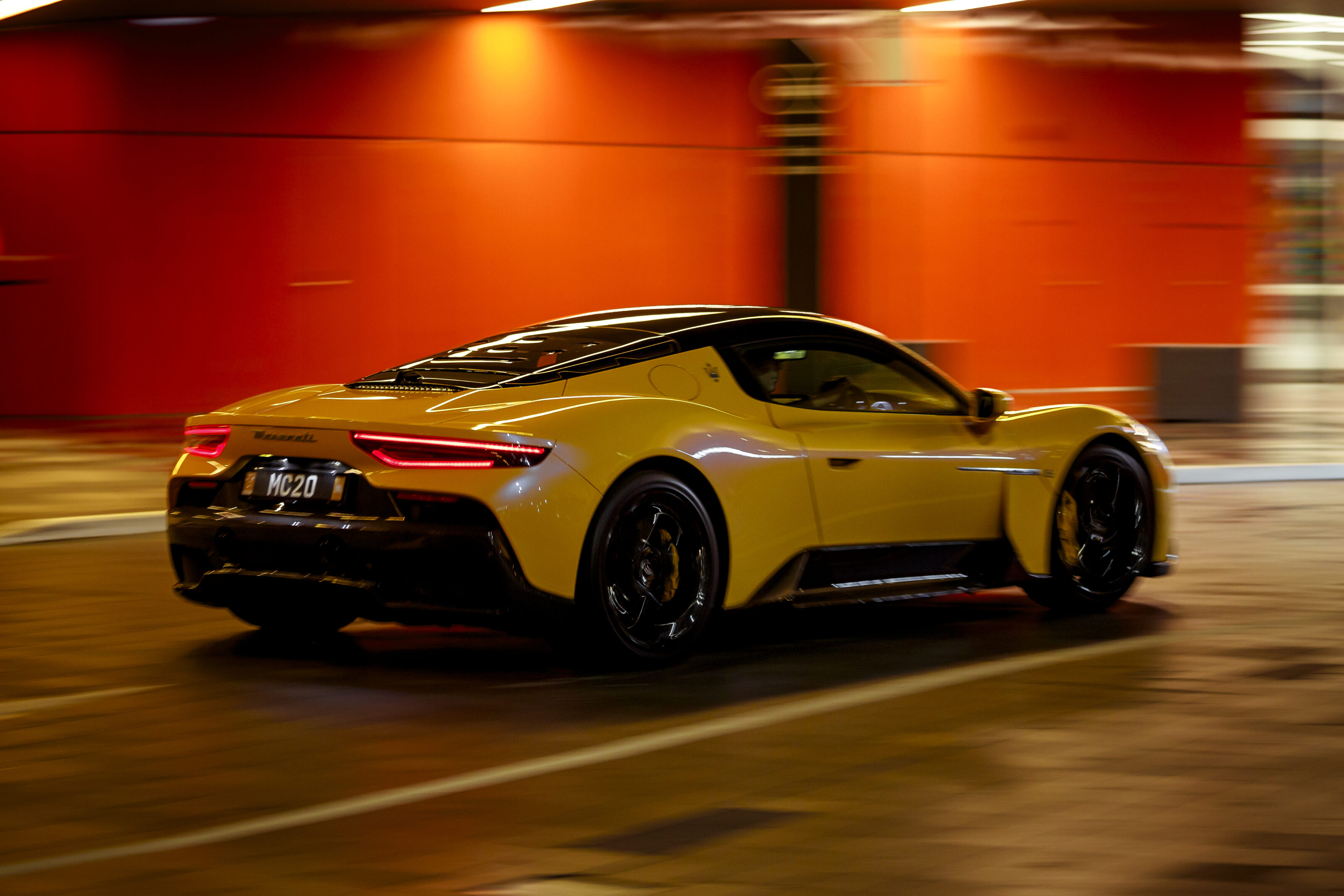
Maserati’s travails can also be attributed to a sizeable dip in Chinese sales, headwinds created by WLTP emissions regulations and, for a while at least, a lack of new product. But part of that decay has concerned the very fabric of what Maserati means. In short, there’s been a certain lack of magic. Walk into a Maserati dealer and you’re confronted with an array of handsome, if classical looking, sedans and SUVs.
There’s no statement of intent, no exemplar of what Maserati stands for in all of its unshackled magnificence. No jaws on the floor. Until now. Given the reception that this MC20, the first to make landfall in Australia, has garnered today, the company has dipped its toe back into the traditional Modenese shock and awe business.
Forget what you first thought when you clapped eyes on the MC20’s styling. I’ll guess. Pretty but generic. Am I close? In the metal, the MC20 has real presence, helped in this case by a hugely expensive three-layer paint finish. Once your eye has acclimatised to the unexpected vertical just astern of the front wheel arch, there’s not a bad line on the thing.
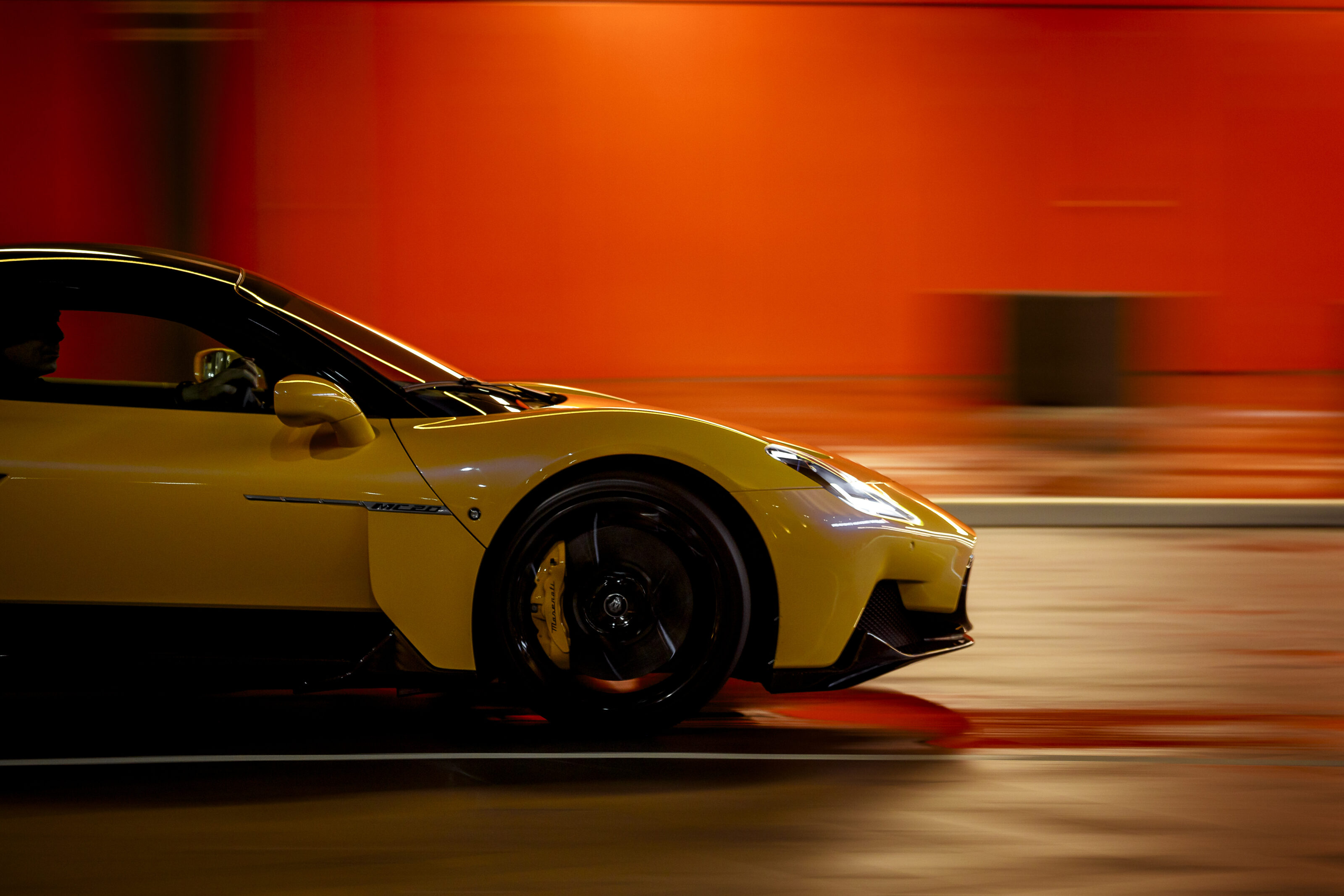
Get closer and you start to pore over the details: the Maserati trident that’s etched into the polycarbonate engine cover, the carbon cam covers of the 463kW Nettuno V6 nestling beneath and the dihedral doors, which show off the stunning forged carbon chassis courtesy of Dallara. If you’ve opted for the three spoke alloy wheels, there’s even a little nod there to the Birdcage 75th show car from 2005.
How tempting must it have been to throw the kitchen sink at the styling, to create an outrageous shape? Instead, doors aside, the design has a certain quiet authority and real front-to-back cohesion. Much has been made of the way the design philosophy splits on a Plimsoll line around the car: technical below and artistic above. The MC20 works the air discreetly, without a reliance on large wings or active aero devices.
Drop inside and there’s a similar restraint. Material quality is excellent, and Maserati has partnered with premier league suppliers. You sit good and low in the electrically adjustable Sabelt seats and the optional Sonus faber 695-watt, 12-speaker stereo impress, as does the functionality and response of the 10.25-inch TFT infotainment touch screen. There’s more headroom than in any similarly shaped exotic I can think of, which is a major drawcard for taller drivers. The centre stack is all carbon fibre and Alcantara, a theme carried across the rest of the cabin.
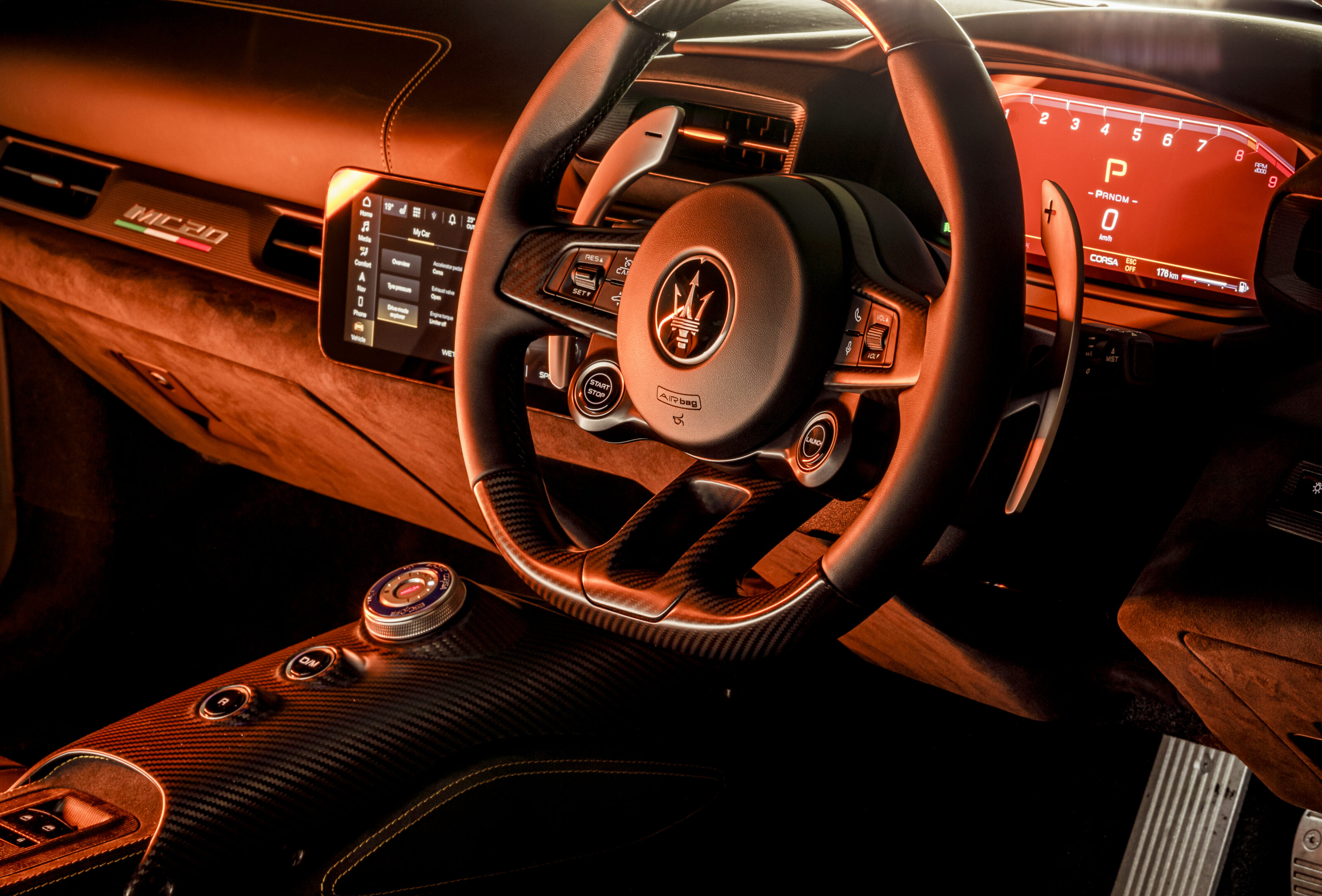
The rear-view camera system takes a bit of getting used to as your eye has to focus on the screen itself and not in the usual fashion of distance focusing on the reflected image. There’s also an unnerving tendency at night for the lights of approaching vehicles to reflect off the cabin’s rear glass and back onto the mirror, giving the momentarily frightening impression that a speeding car is about to overtake into the gap between you and the oncoming vehicle. It also magnifies slightly, so it appears everything is considerably closer than expected. Such is its zoom and clarity that the camera reaches clearly into the cabin of the following vehicle in nose to tail traffic.
Domestic disputes, jaunty sing-alongs, nasal excavation projects and surreptitious phone-checking all get relayed in perfect high definition. Talking of phones, the MC20 features wireless integrations of both Apple CarPlay and Android Auto, although the latter seemed to be draining the phone’s battery faster than the wireless charger could replenish it. Also, curiously, the wireless Android connection dropped whenever the car passed beneath a freeway toll gantry.
Tonight, I’m very glad that the importer specified the optional nose lift system for this MC20. Steep parking ramps and speed humps are insouciantly dispatched, although it pays to remember that the system has no GPS functionality to remember where you lifted the nose last time. It’s purely a manual undertaking.
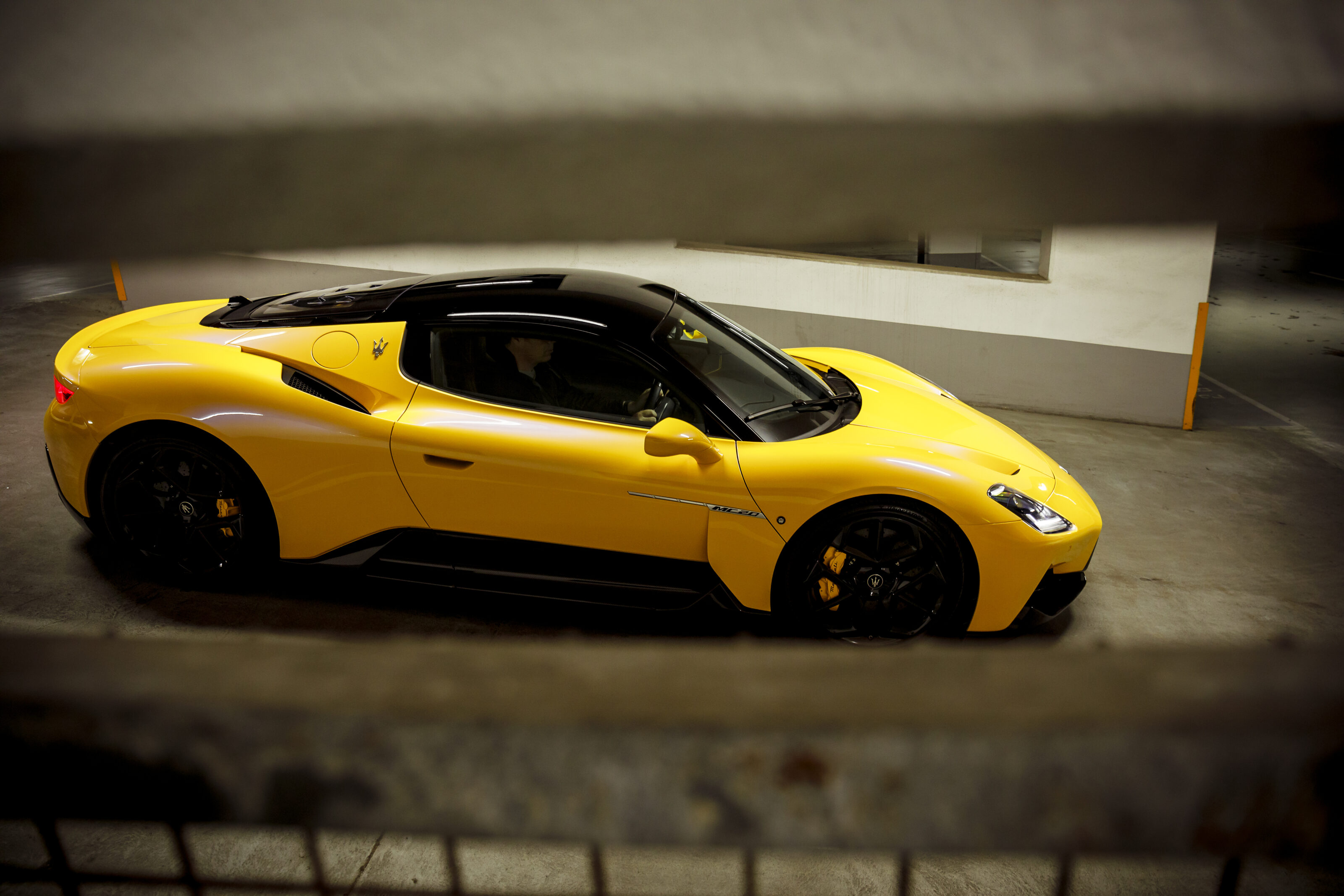
Photography duties over, I start the drive home. The MC20 feels effortless and supple in its standard GT mode. It does, indeed, feel like a GT car and could ably perform that role were it not for its rather paltry storage capacity (47L front, 101L rear) and skimpy 60-litre fuel tank. It’s certainly comfortable and refined enough. On more challenging roads, the MC20 also impresses. The Bridgestone Potenza Sport tyres probably wouldn’t be my first or, come to that, second choice when choosing rubber, but the bespoke 305/30 ZR20 rear boots offer a hefty contact patch and reassuring lateral adhesion.
While there will be some who find the idea of a supercar with a V6 a hurdle too far to comprehend, there’s certainly no performance penalty for choosing the 3.0-litre Nettuno. It punches hard, with a feel akin to one of the McLaren Sport Series cars. With a 315kW/tonne power to weight ratio, the MC20 pips a 312kW/tonne McLaren 570S or a 291kW/tonne 911 Turbo S.
You need to wick the ornate drive mode dial into Sport and then Corsa to get a handle on the savagery of the power delivery but while it certainly delivers in terms of effect, there’s little musicality to its upper registers. Crazily whistling turbos and fluting dump valves give the impression that the Maserati is shovelling dumpster loads of air into its gullet but it’s an unsatisfying experience to search for operatic top notes. Perhaps it’s apt given that the MC20 does so much else to eschew stereotypical supercar shoutiness. Maybe we need to reset our own expectations there.
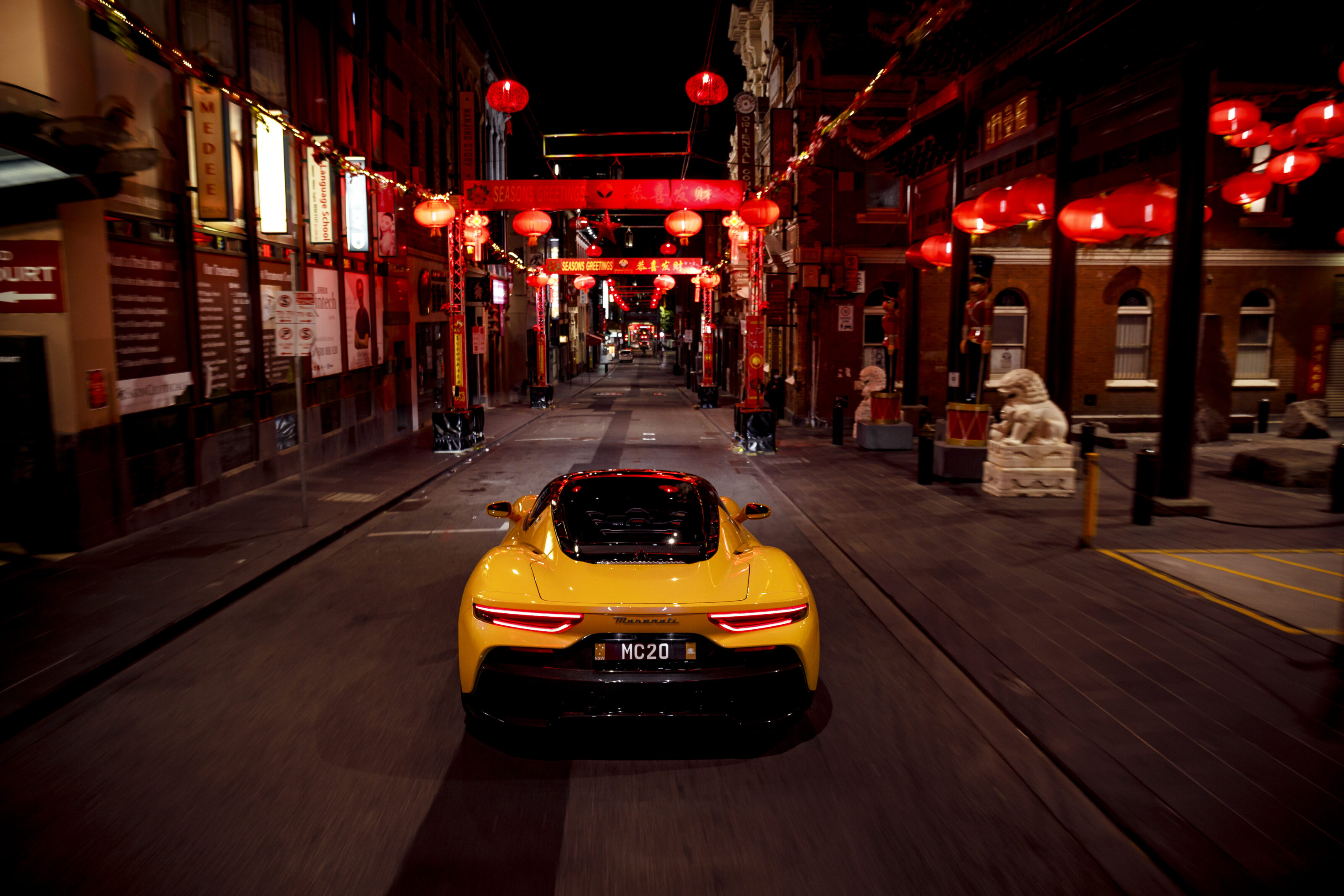
There’s certainly very little wrong with the way that it dismantles a challenging Aussie B-road. Not once did it threaten to ground its chin, although switching the dampers into their firmer mode doubtlessly helps there. Thus entrained, it can feel a little untethered by the burden of gravity, hopping and skipping here and there, big throttle applications bringing the odd flare of wheelspin. It feels wild and exciting, with a great duality of character that gives it the sort of versatility that’s not often the calling card of an Italian mid-engined supercar. It actually feels more like a British lightweight in that it’s alert without the engine dominating. If somebody told you this was Lotus or McLaren’s first stab at a vehicle with electrically assisted power steering, you wouldn’t demur.
That 60-litre fuel tank sees us stopped at yet another servo to debrief. By comparison, a Lamborghini Huracan sports an 80-litre tank and a 992 Turbo 67 litres, while the new generation of V6 supercars like the Ferrari 296 GTB (65L) and McLaren Artura (72L) both deliver more in the way of useable range. You need to leave more room than you expect at the bowser, as the dihedral doors need a lot of space to swing through their arc. Once replenished, it’s back to the road route.
The Tremec eight-speed dual clutch is much the same unit seen in the Corvette C8 and, in this installation, it’s quick-witted with decent shift logic. In GT mode, it’s fairly languid but Sport sees it downchange aggressively and it never seems to refuse a valid downshift request when you’re using the long column-mounted paddles.
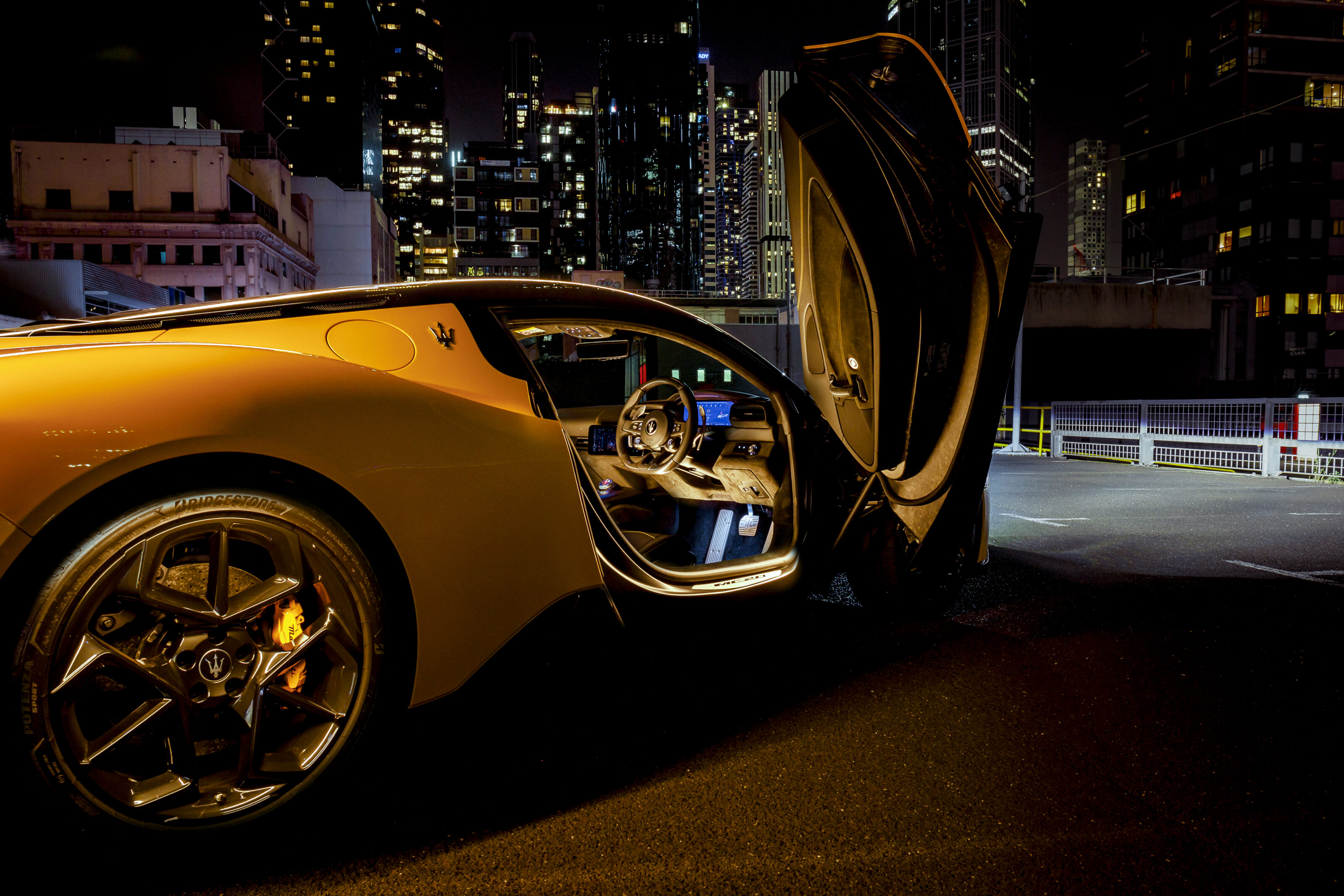
Those cool-to-the-touch shifters are reminiscent of those in the Alfa Romeo Giulia Q, as indeed are certain aspects of the Nettuno engine. Maserati makes great play of the fact that the powerplant is an in-house job, but the links between the MC20’s genesis and those of rumoured Alfa Romeo and Ferrari models seems at best opaque. Perhaps its better to park those ruminations and just pass judgment on what Maserati has delivered.
The MC20 is a befuddlingly excellent car. Although that has as much to do with what has gone before as to the merits of the vehicle in question, the MC20 is one of those few cars that realises a massive step-change in competence for its manufacturer. I’d only driven three such vehicles in my lifetime: the Mk1 Ford Focus, the Lotus Elise and the Giulia Q, but I can now add the MC20 to that list.
It’s a staggering achievement that takes some time to process. Your expectation will be one of flakiness and damning with faint praise. The MC20 feels unburstable, savagely potent and so far from the default choices that you can’t help but warm to it. It’ll never make significant sales volumes for Maserati – the forthcoming Grecale SUV is burdened with those expectations – but as an indicator as to how the Modenese have reimagined, reinvented and refocused their sense of purpose, the MC20 couldn’t have been much better. Not bad for a company without any great experience of building mid-engined cars.
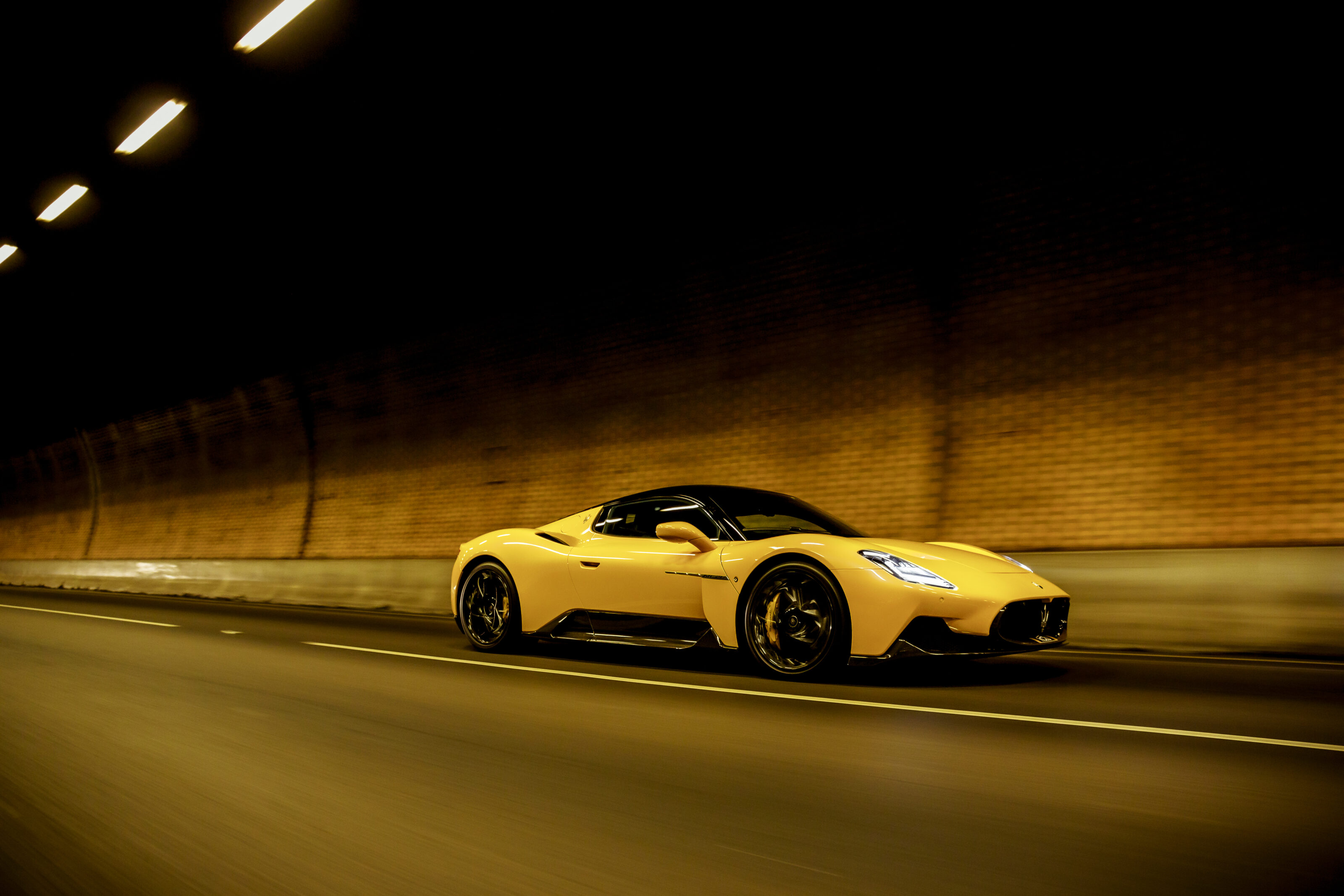
Technical Brief
Bright spark
The Nettuno V6 has the smarts to position Maserati in the top tier of internal-combustion magicians. Named after Neptune – he of the trident – the downsized 3.0-litre engine utilises a very trick installation of pre-chamber ignition. While this tech is universal on an F1 grid, it’s less frequently found on road cars, helping the Nettuno eke a specific power output of 155kW per litre from the V6. This means that the Nettuno delivers a greater power density than any current McLaren, Ferrari, Lamborghini, or Porsche internal combustion engine although it’s roughly on par with the Mercedes-AMG A45 S.
The pre-chamber on the Nettuno is tiny – less than a cubic centimetre per cylinder – and works by igniting a small amount of fuel and air with its own dedicated spark plug. Jets of hot plasma then emerge through tiny holes into the main combustion chamber, creating a very clean, rapid burn at a high (11.0:1) compression ratio. The idea isn’t new – Honda used it as an emissions workaround in the 1970s – but Maserati has paired it with both direct and port injection.
A special copper alloy was key in heat dispersal but no off the shelf spark plug for the pre-chamber was available. The complexity and cost (an additional 150 Euros in materials per engine) is clearly worthwhile. Maserati points to a power boost of 97kW and a torque increase of 130Nm, coupled with an overall 4 per cent fuel saving. If that’s still not quick enough, place a deposit for the electric version.

SCORING
What we liked: Ripper drivetrain; chassis dynamics; styling; finish
Not so much: Needs more music at redline; smartphone handling a little unresolved
VERDICT: 4.5/5
Maserati MC20 specifications
| BODY: | 2-door, 2-seat coupe |
|---|---|
| DRIVE: | rear-wheel |
| ENGINE: | 2992cc V6, DOHC, 24v, twin-turbo |
| BORE X STROKE: | 88.0 x 82.0mm |
| COMPRESSION: | 11.0:1 |
| POWER: | 463kW @ 7500rpm |
| TORQUE: | 730Nm @ 3000-5500rpm |
| POWER/WEIGHT: | 315kW/tonne |
| TRANSMISSION: | 8-speed dual-clutch |
| WEIGHT: | 1470kg |
| SUSPENSION: | A-arms, coil springs, adaptive damper, anti-roll bar (f); multi-links, coil springs, adaptive damper, anti-roll bar (r) |
| L/W/H: | 4669/1965/1224mm |
| WHEELBASE: | 2700mm |
| TRACKS: | 1681/1649mm (f/r) |
| STEERING: | electrically assisted rack-and-pinion |
| BRAKES: | 380mm ventilated discs, 6-piston calipers (f); 350mm ventilated discs, 4-piston calipers (r) |
| WHEELS: | 20.0 x 8.5-inch (f) 20.0 x 11.0-inch (r) |
| TYRES: | 245/35 ZR20 95Y (f/r) 305/30 ZR20 103Y Bridgestone Potenza Sport |
| PRICE: | $438,000 |
We recommend
-
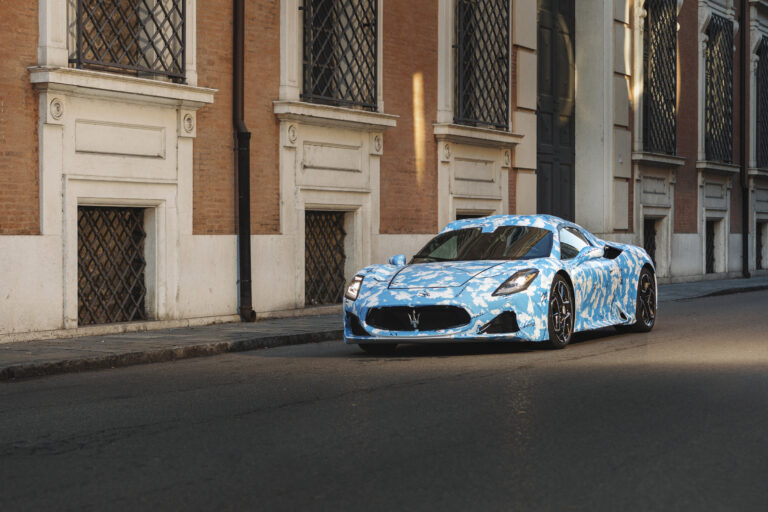 News
News2022 Maserati MC20 Cielo reveal set for May 25
Maserati’s newest supercar will soon gain a topless variant
-
 Features
FeaturesEvery single detail on the Maserati MC20
Everything you need to know about Maserati's new supercar
-
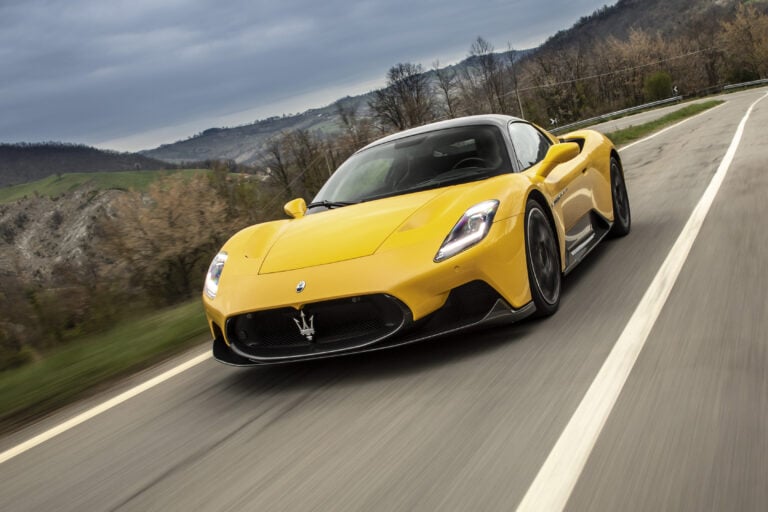 Reviews
Reviews2021 Maserati MC20 review: International first drive
This supercar comeback is an MC with a point to make


